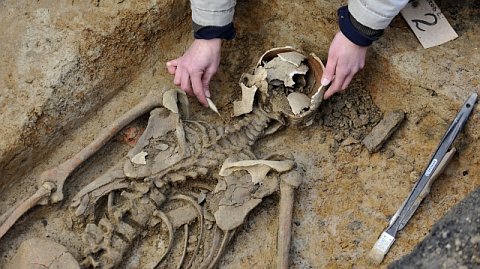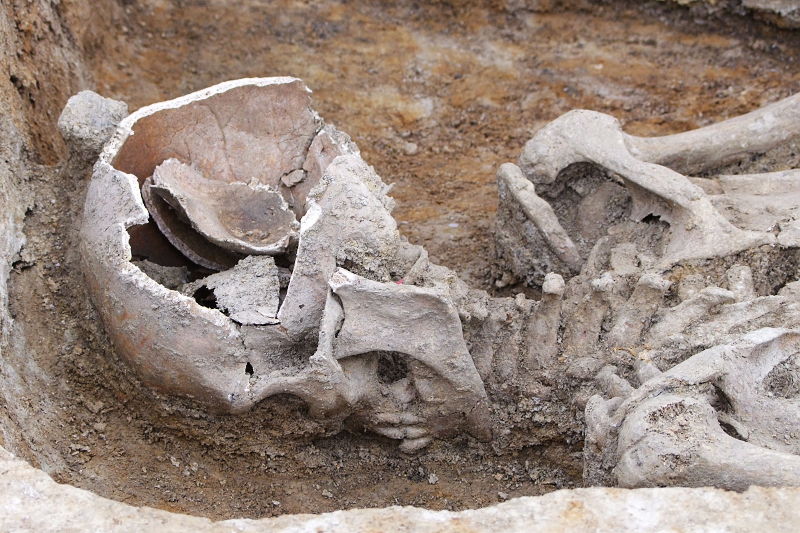Anyone interested in vampires and revenants will have noticed that certain tales or reports are repeated again and again in the literature, sometimes in a number of variations that may even be presented as occurring at different locations. One of these stories was mentioned in
a post a couple of months on shrouds, but at the time I was unable to cite the original. I refer to the story of a revenant who left his shroud when leaving his grave, which was the inspiration for
Goethe's
Totentanz. It was, as far as I know, originally recounted in
Martin Zeiller's comments to his German translation of
Francois de Rosset's
Les histoires tragiques de notre temps. I have recently had access to two editions of Zeiller's
Theatrum tragicum, the earliest being the fourth edition published in Tübingen in 1634.
Commenting on the first story in Rosset's book, Zeiller adds a number of stories about the Devil's works, among them a few concerning spectres and apparitions of the dead. He notes that the learned have differing opinions on the nature of these apparitions, but that his concern is not to discuss whether they are indeed the deceased people or merely the Devil's deceit. His concern is but to a few of the stories of these apparitions. Among them are the omnipresent stories of
the shepherd from Blov and
the 'witch' from Levin as told by
Wenzel Hajek in his
Böhmische Chronica. Continuing from the last of these stories, Zeiller writes:
 'Fast ein gleiche Geschicht has sich vor ettlichen Jaren zu Eywanschitz in Mähren (wie ish solche Anno 1617. und 18. zu unterschiedlichen malen von glaubwürdigen Burgern allda habe erzehlen hören / mir auch der Ort ist gewiesen) begeben / in deme / dem ansehen nach / ein ehrlicher Burger daselbst auff den Kirchhof in der Statt ist begraben worden / welcher stets bey der Nacht auffgestanden ist / und ettliche umbgebracht hat : seinen Sterbküttel liesse er allzeit bey dem Grab ligen / und wann er sich wider niderlegte / so zoge er den Sterbküttel wider an. Einsmals aber / da er also vom Grab hinweg gienge / und die Wächter auff dem Kirchenthurn solches ersahen / haben sie ihme den Sterbküttel unter dessen hinweg getragen : als er nun wider zum Grab kame / und seinen Küttel nicht fande / ruffte er den Wächtern / sie sollen ihme den Küttel geben / oder er wolle sie alle erwürgen : welches sie haben thun müssen : hernach aber wurde er vom Hängcker außgegraben / und zu Stucken zerhawen / da hörete das Ubel auff / und da er auß dem Grab genommen worden / sagte er : sie hätten es jetzt wol recht getroffen : sonsten / weil sein Weib auch gestorben / und zu ihme gelegt worden war / wolten sie beede die halbe Staat umbgebracht haben. Der Hängcker zoge ihm auß dem Maul einen langen grossen Schleyer / welchen er seinem Weib vom Kopff hinweg gessen hatte / den selben hat der Nachrichter dem beystehendem Volck gezeigt / und gesagt : schawet / wie der Schelm so geizig gewesen.'
'Fast ein gleiche Geschicht has sich vor ettlichen Jaren zu Eywanschitz in Mähren (wie ish solche Anno 1617. und 18. zu unterschiedlichen malen von glaubwürdigen Burgern allda habe erzehlen hören / mir auch der Ort ist gewiesen) begeben / in deme / dem ansehen nach / ein ehrlicher Burger daselbst auff den Kirchhof in der Statt ist begraben worden / welcher stets bey der Nacht auffgestanden ist / und ettliche umbgebracht hat : seinen Sterbküttel liesse er allzeit bey dem Grab ligen / und wann er sich wider niderlegte / so zoge er den Sterbküttel wider an. Einsmals aber / da er also vom Grab hinweg gienge / und die Wächter auff dem Kirchenthurn solches ersahen / haben sie ihme den Sterbküttel unter dessen hinweg getragen : als er nun wider zum Grab kame / und seinen Küttel nicht fande / ruffte er den Wächtern / sie sollen ihme den Küttel geben / oder er wolle sie alle erwürgen : welches sie haben thun müssen : hernach aber wurde er vom Hängcker außgegraben / und zu Stucken zerhawen / da hörete das Ubel auff / und da er auß dem Grab genommen worden / sagte er : sie hätten es jetzt wol recht getroffen : sonsten / weil sein Weib auch gestorben / und zu ihme gelegt worden war / wolten sie beede die halbe Staat umbgebracht haben. Der Hängcker zoge ihm auß dem Maul einen langen grossen Schleyer / welchen er seinem Weib vom Kopff hinweg gessen hatte / den selben hat der Nachrichter dem beystehendem Volck gezeigt / und gesagt : schawet / wie der Schelm so geizig gewesen.'
So this is probably the oldest known version of this story which not only inspired Goethe, but also later on turned up in Le Fanu's
Carmilla , as
a story from Breslau and, probably, most notably in the 'vampire' story from
Liebava in Moravia in
Calmet's
Traité. Zeiller's original does not differ much from the retelling in
Der höllische Proteus which I quoted in
my post on the subject, but portions of the story are left out or changed in various versions.
Zeiller travelled in various parts of the German territories. In 1650 he authored an interesting topographical work on Bohemia, Moravia and Silesia,
Topographia Bohemiae, Moraviae et Silesiae, which also contains information on Eywanschitz (today called Ivančice or Eibenschütz) and other locations of interest. Under Lewin/Levin, Zeiller once again tells the tale of the witch. He is, however, not certain that Hajek actually refers to the same Lewin, as the passage below shows.


